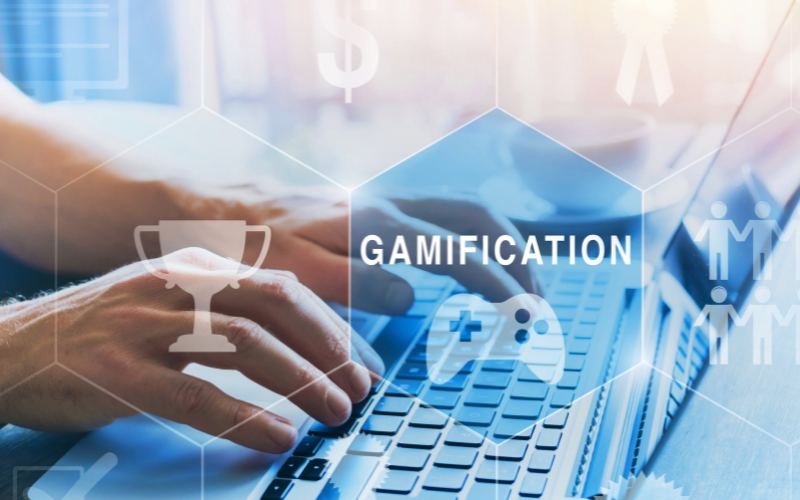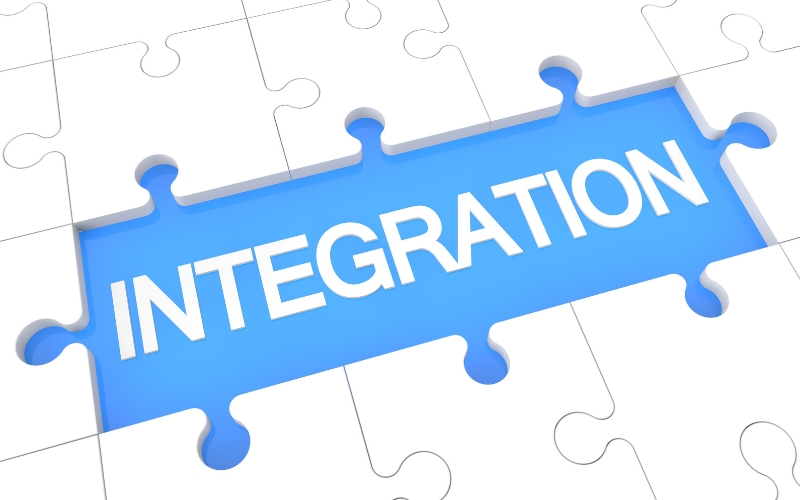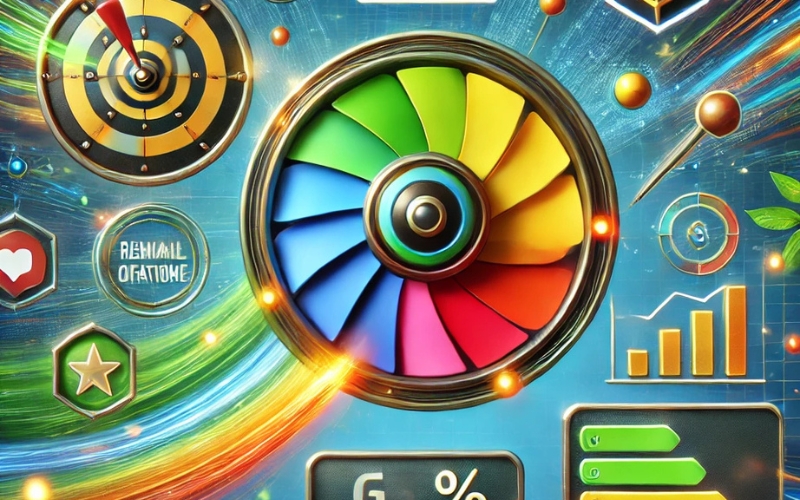Gamification has become a powerful tool in email marketing, transforming traditional campaigns into engaging, interactive experiences for subscribers. By integrating game-like elements such as quizzes, rewards, and challenges, businesses can foster deeper engagement, boost open and click-through rates, and drive conversions. The use of gamification taps into fundamental psychological triggers like competition, achievement, and rewards, making emails more compelling and motivating subscribers to take action. In this article, we will explore how gamification works in email marketing, creative ways to integrate it into campaigns, and key metrics to track in order to measure its success and optimize future efforts.
Understanding Gamification in Email Marketing: What It Is and Why It Works

Gamification, in the context of email marketing, refers to the integration of game-like elements into email campaigns to engage and motivate subscribers. These elements might include points, badges, challenges, interactive content, and rewards. By leveraging the principles of gamification, marketers can turn a simple email into an interactive experience that keeps subscribers engaged, encourages them to take action, and builds a sense of excitement around the brand.
Key Elements of Gamification in Email Marketing
There are several key elements involved in gamifying email campaigns. One of the most common is reward systems, where subscribers earn points, discounts, or prizes for engaging with the email content. Another element is competition, such as leaderboards or challenges, where subscribers compete to earn the most points or achieve the highest score. Progress tracking is also essential in gamification—showing users their progress through a series of tasks or steps helps keep them motivated. Other elements include quizzes, polls, and mini-games that are designed to encourage interaction and create a fun, enjoyable experience.
How Gamification Enhances User Engagement and Boosts Open and Click-Through Rates
Gamification works by making the process of engaging with emails feel like a fun and rewarding experience. When subscribers are presented with an email campaign that involves interactive elements or challenges, it sparks curiosity and incentivizes them to open the email to participate. This increased interest leads to higher open rates.
Once subscribers open the email, gamification encourages further interaction. By offering rewards, progress tracking, or interactive quizzes, gamification motivates users to click through to complete tasks or unlock more content, which results in higher click-through rates (CTR). Additionally, gamification fosters a sense of involvement and achievement, which can boost the likelihood of a subscriber taking the desired action, such as making a purchase or sharing the email with others.
Tapping into Psychological Triggers: Competition, Rewards, and Achievement
One of the reasons gamification works so well is because it taps into fundamental psychological triggers that drive human behavior. Competition is a powerful motivator; people love to challenge themselves and compete against others, especially when there’s an opportunity to win or earn a prize. Incorporating competitive elements, such as leaderboards or challenges, can push subscribers to engage more frequently with your emails.
Similarly, rewards provide a sense of instant gratification. Whether it’s earning points for every click or receiving a discount after completing a task, rewards keep subscribers coming back for more. This taps into the human desire for recognition and the pleasure of earning something for their efforts.
Lastly, achievement plays a key role in driving continued engagement. As subscribers complete tasks or progress through different levels, they experience a sense of accomplishment. This feeling of achievement can foster positive brand associations and encourage subscribers to keep interacting with future campaigns.
In conclusion, gamification in email marketing is an effective strategy for increasing engagement, boosting open and click-through rates, and building a stronger connection with subscribers. By tapping into psychological triggers like competition, rewards, and achievement, gamification can transform a simple email into an exciting, interactive experience that motivates subscribers to take action and stay engaged with your brand.
Creative Ways to Integrate Gamification into Your Email Campaigns

Gamification in Email Marketing is an effective way to boost engagement and enhance user experience. By incorporating interactive elements, point systems, rewards, and exclusive offers, businesses can transform their email campaigns into fun and compelling experiences that motivate subscribers to take action. Here are several creative ways to integrate Gamification in Email Marketing into your strategy.
1. Incorporating Quizzes, Polls, and Interactive Challenges
One of the most effective ways to engage subscribers is by including interactive elements like quizzes, polls, and challenges in your emails. These elements provide an opportunity for subscribers to actively participate and enjoy the content rather than passively consuming it. For example, a beauty brand could include a “Which product is right for your skin?” quiz that helps users choose the best skincare products. These tactics are perfect examples of Gamification in Email Marketing, increasing engagement while offering valuable customer insights.
Polls are another great tool to collect opinions while making the email feel more interactive. Asking simple questions like “What new flavor would you like us to launch next?” can spark excitement and drive engagement. Adding a challenge, such as “Complete the challenge to unlock an exclusive offer,” is a brilliant way to execute Gamification in Email Marketing, encouraging subscribers to interact with your content actively and stay engaged.
Interactive elements like these not only keep subscribers interested but also create a more personalized experience, perfectly showcasing the benefits of Gamification in Email Marketing.
2. Using Point Systems, Rewards, and Exclusive Offers to Incentivize Action
Gamifying your email campaigns through point systems and rewards can significantly increase user interaction. For example, brands can introduce a loyalty program where subscribers earn points for opening emails, clicking links, making purchases, or referring friends. These points can be redeemed for discounts, free products, or exclusive access to events, aligning perfectly with Gamification in Email Marketing principles.
Another popular tactic is offering exclusive rewards for completing specific tasks, such as “Complete our survey and earn 50% off your next purchase” or “Unlock a special discount by sharing our email with a friend.” These examples illustrate how Gamification in Email Marketing motivates users to engage and increases the chances of converting them into customers.
By giving your audience clear, attainable rewards for their actions, Gamification in Email Marketing fosters a sense of achievement, encouraging continued interaction with your emails.
3. Examples of Successful Gamified Email Campaigns from Well-Known Brands
Several brands have successfully used Gamification in Email Marketing to drive engagement. For instance, Starbucks uses its Rewards Program to gamify email content. Subscribers earn stars for every purchase, which can then be redeemed for free drinks or food. This point-based system highlights how effective Gamification in Email Marketing can be in motivating customers to make more purchases.
Nike also leverages Gamification in Email Marketing by challenging users to reach fitness goals through interactive email campaigns. Offering rewards for completing milestones, Nike creates a motivating and engaging experience that drives continuous interaction.
Lastly, Sephora’s Beauty Insider program exemplifies how Gamification in Email Marketing can enhance user experience. Subscribers earn points and exclusive discounts for completing tasks like product reviews or attending events. These gamified tactics create a rewarding and fun customer journey.
In conclusion, Gamification in Email Marketing significantly enhances user engagement and boosts conversions. Whether through quizzes, polls, point systems, or exclusive offers, gamified strategies motivate subscribers to interact with your content and take action. By embracing Gamification in Email Marketing, your brand can foster stronger relationships with customers and build long-term loyalty.
Measuring the Success of Gamified Email Campaigns: Key Metrics to Track

Gamification in email marketing can significantly boost engagement, but to determine whether your gamified campaigns are truly effective, it’s essential to track the right metrics. By measuring key performance indicators (KPIs), you can gain valuable insights into how well your gamified emails are resonating with subscribers and whether they’re leading to meaningful conversions. Here are the most important metrics to track when measuring the success of your gamified email campaigns.
1. Key Performance Indicators (KPIs) for Assessing Effectiveness
To evaluate the effectiveness of gamification in email campaigns, start by monitoring the following KPIs:
- Open Rates: This is the first step in measuring success, as it indicates how well your subject lines and visuals grab attention. Gamification elements like rewards or exclusive offers in your subject lines can help increase open rates by sparking curiosity.
- Click-Through Rates (CTR): This metric measures the percentage of recipients who clicked on links in your gamified emails. A higher CTR suggests that the interactive elements, such as quizzes, polls, or calls-to-action (CTAs), are engaging subscribers and prompting them to take action.
- Engagement Rate: Engagement is often measured by how much time recipients spend interacting with the gamified content, such as completing a quiz or participating in a challenge. Tracking this can help determine how well your gamified content is holding subscribers’ attention.
- Conversion Rate: Ultimately, the success of gamification is determined by its ability to drive conversions—whether that’s completing a purchase, signing up for an event, or downloading an app. Monitoring conversion rates shows how effectively your gamified emails move subscribers through the sales funnel.
2. Tracking User Interaction, Engagement, and Conversion Rates
Once you’ve defined the KPIs, the next step is tracking specific user interactions within your emails. For example, if you’re using a point-based system, measure how many subscribers engage with it by opening the emails and clicking through to claim their rewards. You can use email tracking tools like Google Analytics or email marketing platforms such as Mailchimp, Active Campaign, or HubSpot to track user behavior and monitor specific actions triggered by the gamified elements in your emails.
For instance, tracking the number of quiz completions or the number of participants in a challenge gives you valuable insight into how well your gamified content is engaging subscribers. Additionally, you can measure how many subscribers share your email with others or refer friends, which directly impacts conversions and the spread of your campaign.
3. Adjusting Your Strategy Based on Data and Insights
The key to improving the performance of your campaigns using Gamification in Email Marketing lies in continuously refining your strategy based on data. If you notice that your open rates are high but CTR and conversions are low, it may indicate that the content inside your email isn’t compelling enough or the CTA needs to be clearer. Similarly, if engagement with a quiz is high but conversions are still low, consider offering more enticing rewards or adjusting your CTA to lead more directly to a purchase. Gamification in Email Marketing can enhance such efforts when applied effectively.
A/B testing can be invaluable in this context. Test different Gamification in Email Marketing elements, such as the type of rewards, the frequency of gamified emails, or the design of your CTA buttons, to see which resonates most with your audience. By analyzing the results, you can tweak your approach to improve both engagement and conversion rates while maximizing the benefits of Gamification in Email Marketing.
In conclusion, tracking the right KPIs, understanding user interactions, and adjusting your strategy based on real-time data are crucial steps in measuring the success of Gamification in Email Marketing campaigns. By continually monitoring and optimizing your approach, you can create more engaging and effective email campaigns that drive both user interaction and conversions.
Conclusion
In conclusion, Gamification in Email Marketing offers a dynamic way to engage subscribers, boost email open rates, and increase conversions. By understanding the psychological triggers that drive user behavior and creatively incorporating elements like quizzes, rewards, and challenges into your email campaigns, you can build stronger connections with your audience. Measuring success through key performance indicators and adjusting your strategy based on real-time data ensures continuous improvement and better results with each campaign. When done correctly, Gamification in Email Marketing can elevate your brand’s communication and create lasting relationships with your subscribers.

